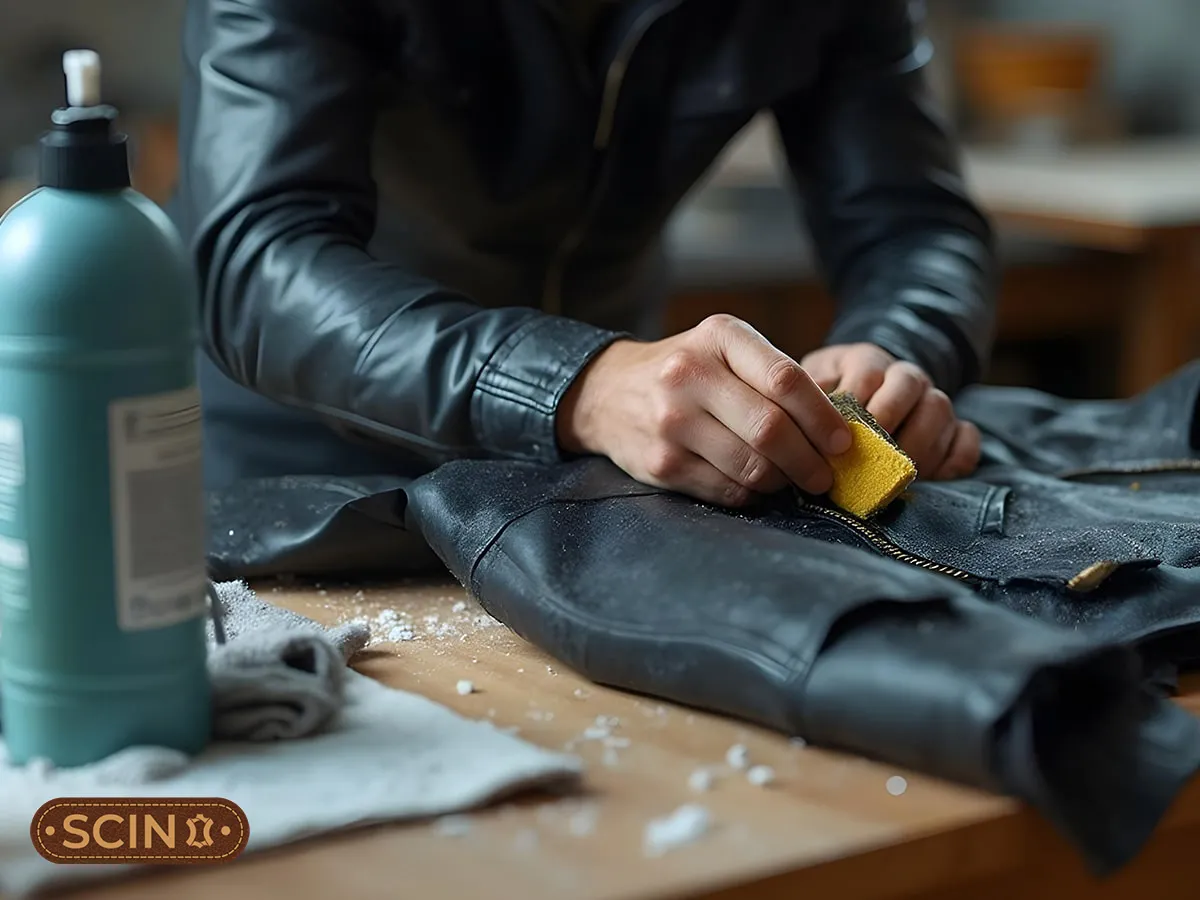Dyeing leather is a creative way to refresh its look or customize your favored leather objects. The process of how to dye leather may seem hard, but with the proper tools and techniques, it becomes a easy process. This blog will guide you through the whole process, making sure you know the best way to dye leather, step by step.
Dyeing leather doesn’t require professional skills, you can easily do it at home! Learning how to dye leather properly from preparing the leather and applying the dye to finishing it with care can make a world of difference. Whether you’re thinking, “Can leather be dyed?” or curious about result you get after dyeing leather, this blog got you covered.
Can Leather Be Dyed?
Leather is a highly versatile material that can be dyed to achieve a personalized look. Whether you’re working with natural, finished, or pre-dyed leather, the right dyeing techniques can breathe new life into your items. Mastering the art of leather dyeing is a straightforward yet impactful process, allowing you to add a fresh, customized touch. The key is to identify the different types of leather or leather jacket types you have and to use high-quality dyeing products. Not only does dyeing enhance the leather’s appearance, but it also prolongs its lifespan, leaving it vibrant and revitalized.
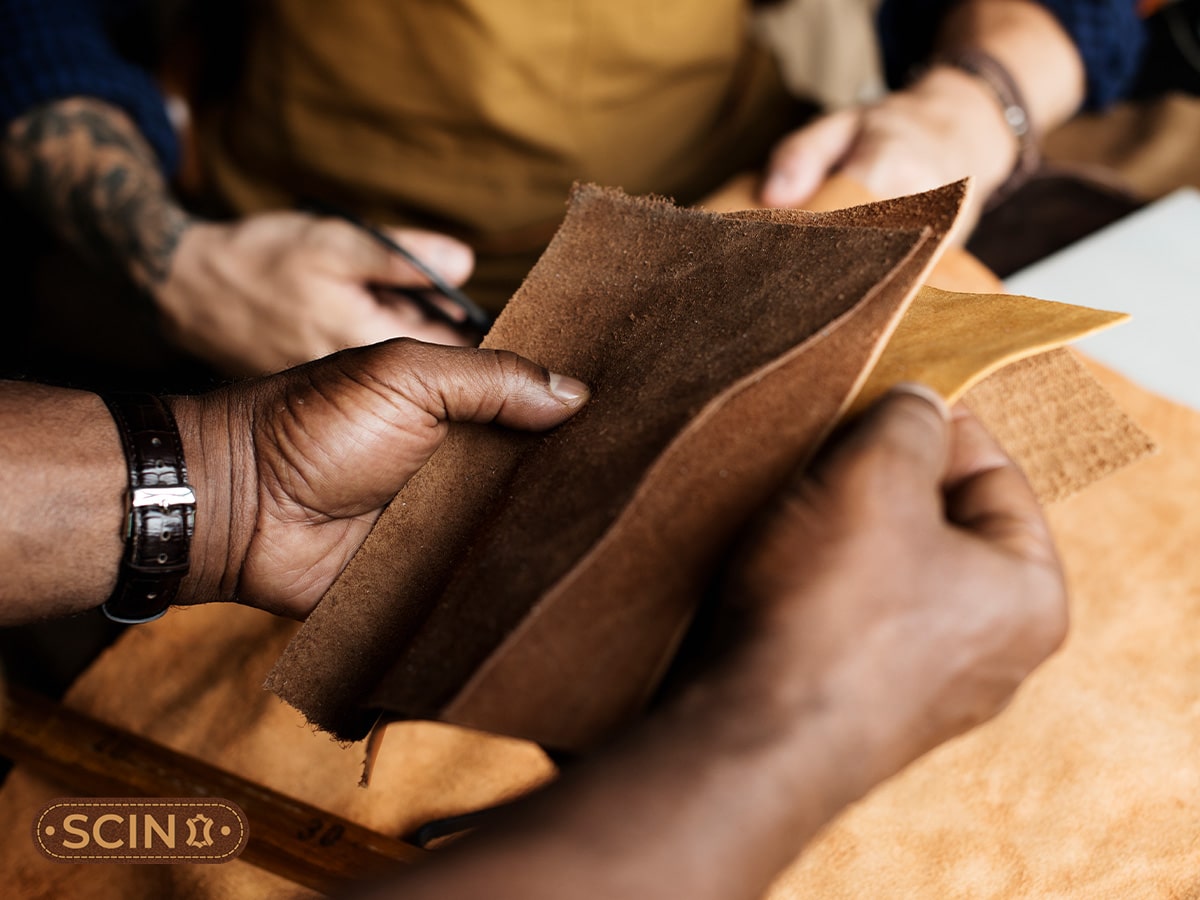
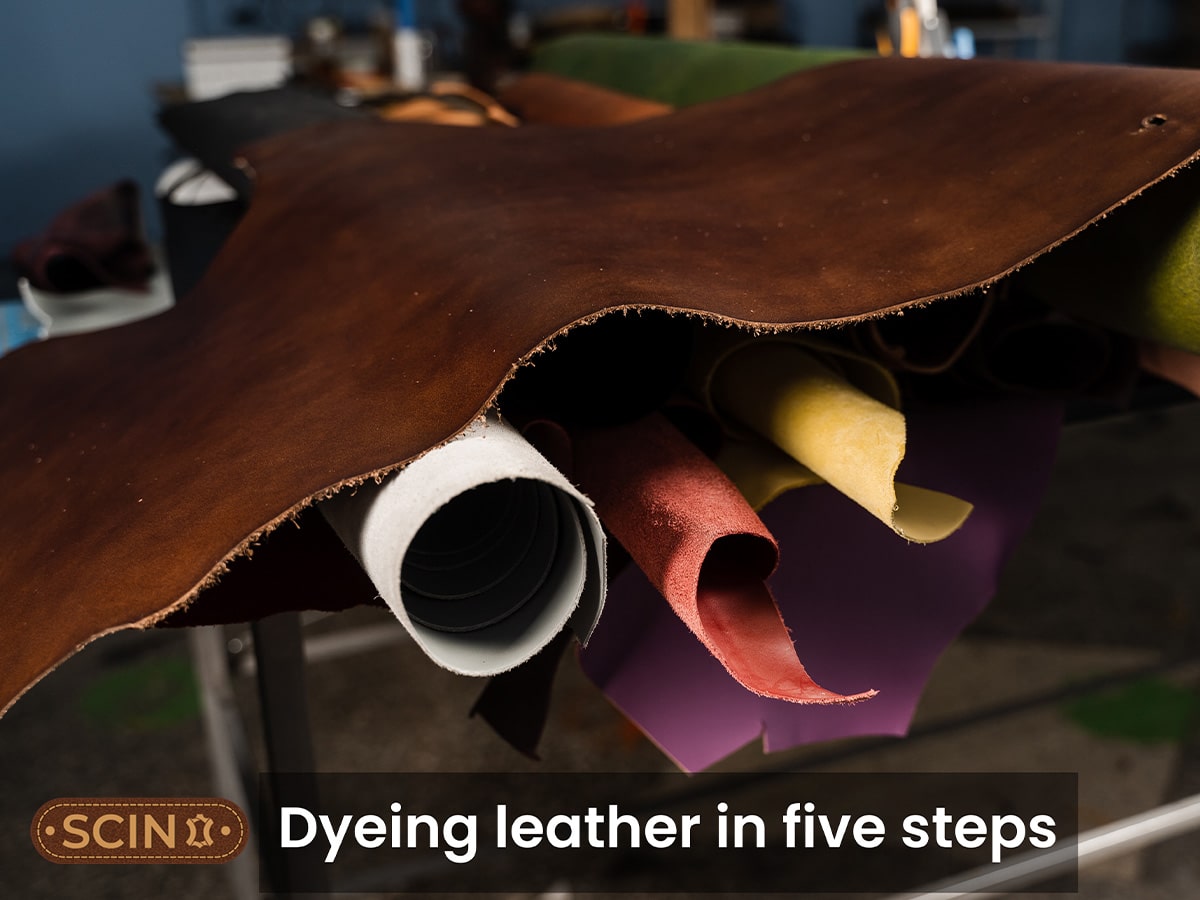
How to Dye Leather in 5 Steps
Dyeing leather doesn’t have to be difficult. With the right approach, anyone can revamp their leather items at home. By properly preparing the leather and applying the dye in even layers, each step plays a crucial role in achieving a flawless, professional result. Whether you’re a beginner or looking to perfect your skills, this guide breaks the process into simple, actionable steps to ensure your success.
To begin, gather the essential tools, such as premium leather dye, applicators, and finishing products. Mastering the art of leather dyeing guarantees vibrant, durable results. This comprehensive guide will walk you through the most effective techniques to dye leather and achieve a seamless finish. Whether you’re exploring innovative alternatives to traditional dyes or working with professional-grade products, these steps will empower you to create remarkable leather transformations with striking before-and-aftereffects.
Step 1: Prepare Your Leather for Dyeing
Clean the Surface Thoroughly
Before dyeing, ensure the leather surface is clean and free from dirt, oils, or blot. Use a leather cleaner or rubbing alcohol to gently wipe the surface. Thorough cleaning guarantees the dye adheres uniformly to the material. Washing your leather beforehand, can be a good option.
To know more on about leather, read: how to wash a leather jacket?
Sand and Condition the Leather
For dyed or finished leather, gently sand the surface with fine-grit sandpaper to create a porous texture, allowing better absorption. Conditioning softens the leather, enhancing its ability to take on dye.
For more on conditioning leather jacket, read: How to condition a leather jacket?
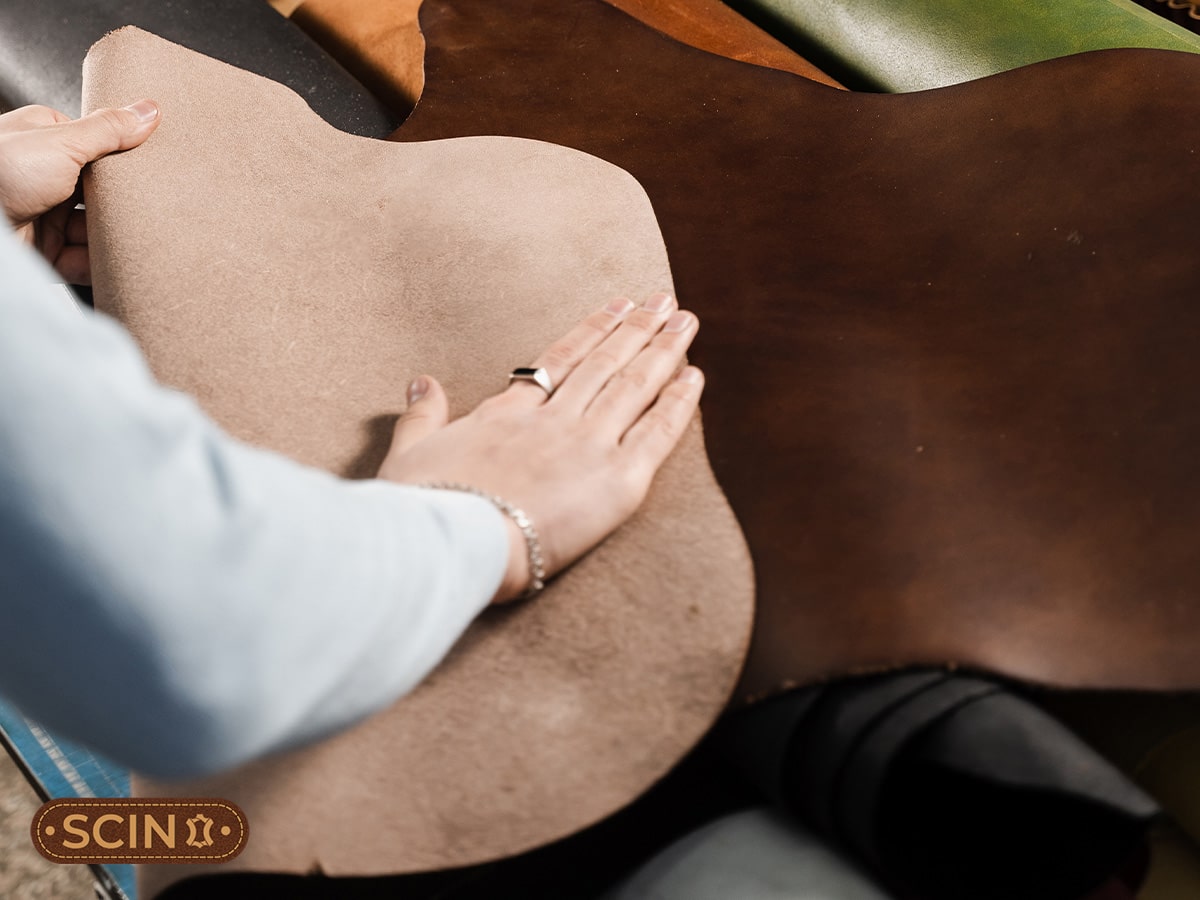
Protect Surrounding Areas
Cover areas you don’t want to dye, such as buckles or hardware, with tape. This step is essential for maintaining a neat finish and avoiding accidental stains. Once everything is prepared, you are ready for dyeing leather.
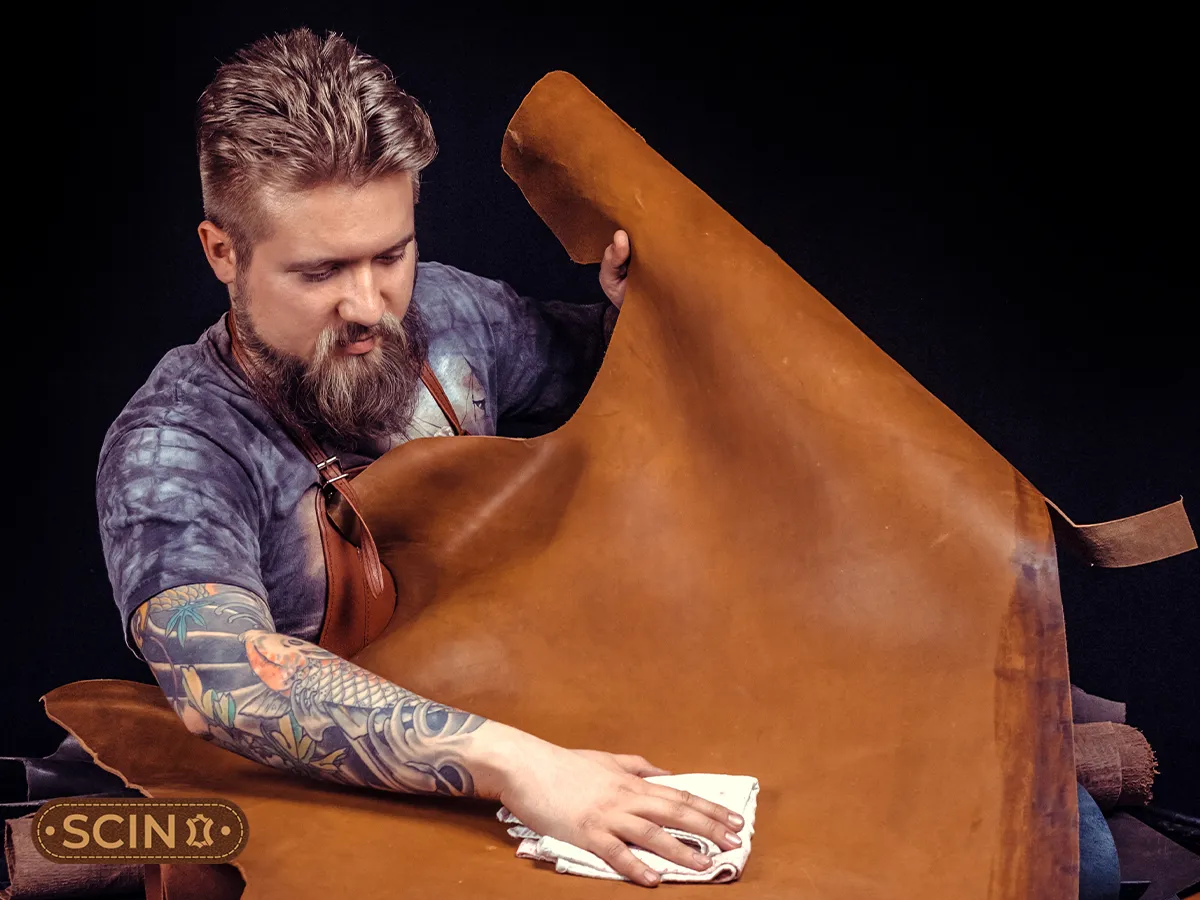
Step 2: Apply a Base Coat Evenly
Choose the Right Applicator
Choosing the right tool, whether it’s a sponge, cloth, or brush, makes all the difference for smooth and even application. A sponge is perfect for covering larger areas, while a brush is your go-to for those intricate details.
Use Circular Motions
Dip the applicator into the dye and apply it using small circular motions. This method ensures the base coat spreads evenly without streaks. Circular motions also help the dye penetrate deeper into the leather.
Let It Dry Completely
Let the first coat dry thoroughly before adding more layers. This process ensures the dye adheres properly and avoids smudging. Mastering the proper use of leather dye greatly enhances your results.
Step 3: Use a Second Coat to the Right Diagonally
Use Light, Consistent Strokes
When applying the second coat, use diagonal strokes to the right. This technique ensures the dye covers any missed spots from the base coat.
Build the Color Gradually
Apply thin layers of dye to build the color gradually. Avoid putting too much applicator on leather, as too much dye can lead to blotching.
Wait for Full Absorption
After coating diagonally to the right, allow the leather enough time to fully absorb the dye. This step ensures vibrant results and prevents uneven coloring.
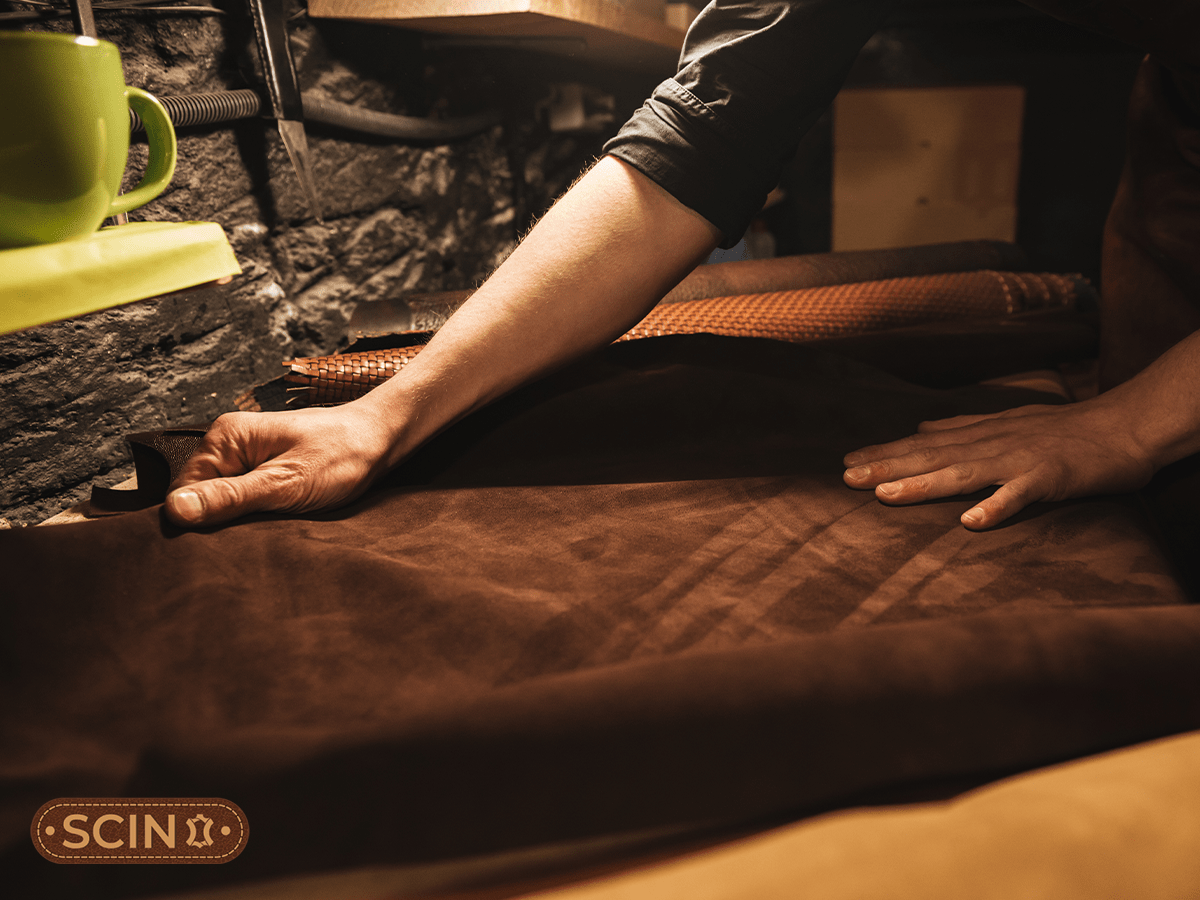

Step 4: Use a Second Coat to the Left Diagonally
Cover All Angles
The second diagonal coat—this time to the left—ensures complete coverage. Work methodically, paying close attention to edges and seams for an even finish.
Smooth Out Imperfections
Apply gentle pressure with a steady hand to smooth out any uneven areas from previous coats. This step improves the overall appearance of the leather.
Inspect for Consistency
Once finished, inspect the leather under proper lighting to ensure consistent coloring. If necessary, apply a third coat.
Step 5: Finish and Buff the Leather
Apply a Protective Finish
After the dye dries, apply a protective finish to seal the color for a polished look. This step prevents fading and improves durability.
Buff for Shine
Use a soft cloth to gently buff the leather. This enhances the shine and gives your leather a professional and vibrant appearance.
Care for the Leather
Maintain your dyed leather by conditioning it regularly. If you ever wonder how to finish leather after dyeing, this step ensures long-lasting beauty and protection.
